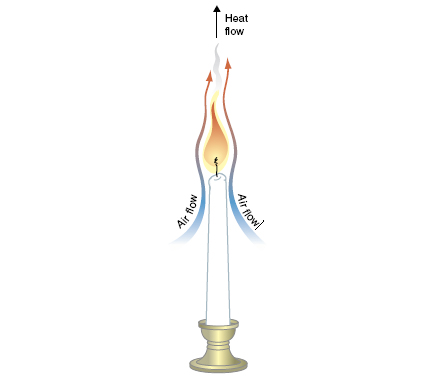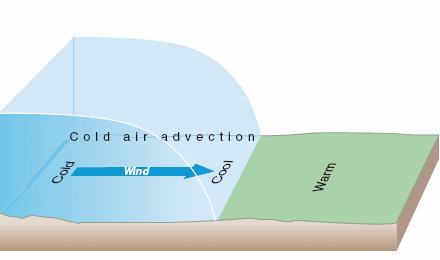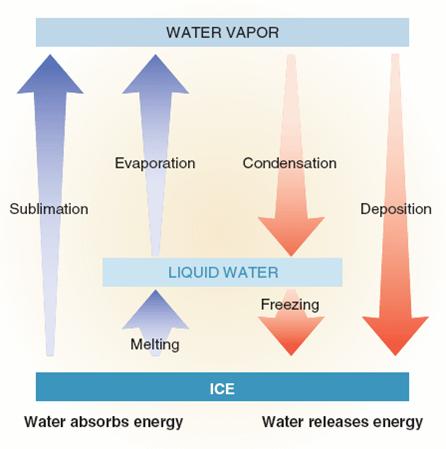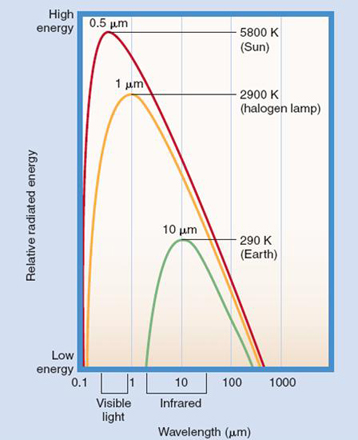Conduction
Conduction is the process of heat transfer from molecule to molecule. An example of energy transfer by conduction is when we touch an object to feel if it is warm or cold.

Convection
Convection is the process of transferring energy vertically. If the ground is hot, heat is transferred to air molecules in contact with the surface via conduction.

Advection
The horizontal transport of heat in the atmosphere is referred to as heat advection.

Latent Heat
Latent heat is the heat absorbed or released per unit mass when water changes phase.

Radiation
In climate studies we are concerned with longwave and shortwave radiation.
The Sun powers Earth's weather and climate with solar energy streaming through space as electromagnetic waves.
Because the Sun is extremely hot, it emits radiation in short wavelengths called solar radiation. Because Earth's surface (and atmosphere) is so much cooler than the Sun, it loses energy to space as longwave terrestrial radiation.

The importance of temperature
The difference between the sun emitting shortwave radiation in the 0.2 to 4 micrometer band and the earth emitting longwave radiation in the 4 to 100 micrometer band lies in the difference in the temperatures of the two objects. All objects that have a temperature greater than absolute zero emit radiation, and the magnitude of the energy from this radiation is directly related to the temperature and wavelength of the radiation. The difference between short- and longwave radiation is very important when considering effects on climate.
